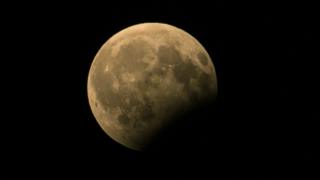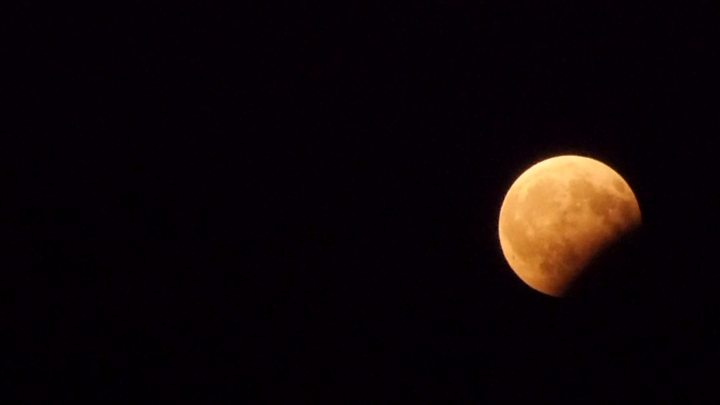 Image copyright
Getty Images/Bataiev Yurii
Image copyright
Getty Images/Bataiev Yurii
A partial lunar eclipse could be visible from the UK on Tuesday, 50 years to the day since the US mission to put men on the Moon lifted off.
Up to 60% of the Moon's surface will appear red or dark grey at the height of the eclipse at about 22:30 BST, the Royal Astronomical Society (RAS) said.
Lunar eclipses occur when the Earth crosses between the Sun and Moon - casting a shadow on the lunar surface.
The Apollo 11 crew blasted off from Florida on 16 July 1969.
The voyage ended four days later when US astronaut Neil Armstrong became the first man to step on to the Moon's surface.
During a partial eclipse, some - but not all - of the Moon passes through the darkest area of shadow behind the Earth, the central region called the umbra.
On Tuesday, astronomers forecast the Moon to leave this darker shadow at about midnight.
Provided there are clear skies, the eclipse can be seen in the UK from Moon rise, which begins between 21:00 and 22:00 BST depending on where you are.
It will end at approximately 01:17 BST when the Moon exits the Earth's lighter shadow, called the penumbra, RAS said.
The event will also be visible across Africa, much of Asia, the eastern part of South America, and western Australia.
Dr Morgan Hollis, from the Royal Astronomical Society, advises those who wish to see the event to find a "low unobstructed horizon" without tall buildings and trees.
He said: "Unlike a solar eclipse it's entirely safe to watch a lunar eclipse with the naked eye, so this one is fine.

"You don't need any special equipment and it should be fairly warm as well, given temperatures recently. It should be good if the weather is clear and the conditions are clear."
Lunar eclipses can only occur on the night of a full moon.
The next partial lunar eclipse is not expected until 19 November 2021.
The last total lunar eclipse - sometimes known as a "super blood wolf moon" - was visible in the UK in January.
Skywatchers in the UK will not get the chance to see another until 2029 - weather permitting.